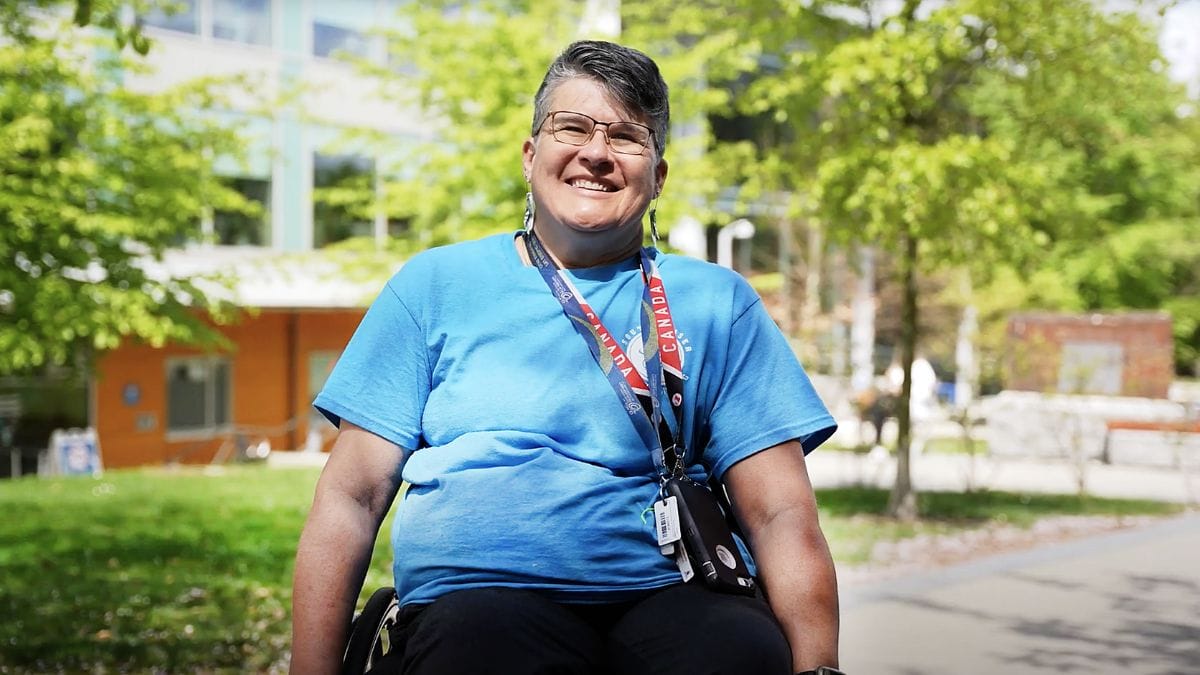
In February, a research group led by Swiss researchers Dr. Jocelyne Bloch and Dr. Grégoire Courtine published results of their STIMO clinical trial in the journal Nature Medicine. Three participants with complete SCI were surgically implanted with an array of electrodes. During electrical stimulation, all three regained the ability to independently move their legs during various activities including a walking motion while suspended on a treadmill. Naturally, despite Courtine’s cautions that this did not represent in an imminent cure for SCI, the mainstream media enthusiastically embraced it as such.
Overshadowed by this news was the publication of a study by researchers at UCLA. Using an externally-worn device and electrodes that are attached to the skin above the spinal cord in just a few seconds, Dr. Reggie Edgerton and colleagues demonstrated how a simple course of stimulation could restore sensation and induce contractions in the rectum of people with SCI who live with neurogenic bowel dysfunction. They also presented a single case study, in which one participant with SCI used the same system to reduce her bowel routine from 75 minutes to just 15 minutes.
Not surprisingly, this research didn’t create anywhere near the same media buzz. This is a shame, of course. It’s not that the STIMO trial isn’t impressive work—taken in context, it truly is. As Courtine carefully explained, many years down the road, it could be one component of many complementary strategies needed for a breakthrough in restoring all kinds of function, including walking, after SCI. But people with SCI have repeatedly said in survey after survey that neurogenic bowel is a far greater and immediate research priority than not being able to walk. That’s why we believe the prospect of a non-surgical, easy-to-use, low-cost, and low-risk device to dramatically improve bowel function for people is really exciting—particularly as widescale approval of the device by bodies like the FDA and Health Canada appears to be imminent.
The UCLA researchers’ paper, titled The Effect of Non-invasive Spinal Cord Stimulation on Anorectal Function in Individuals With Spinal Cord Injury: A Case Series, appeared in the February 17th issue of the journal Frontiers in Neuroscience. In the past, we’ve published several stories about the scientists involved—Dr. Reggie Edgerton, Dr. Parag Gad, and four other colleagues associated with Edgerton’s UCLA laboratory—and their work in exploring the use of surgery-free transcutaneous neurostimulation devices to improve a variety of functions in chronic SCI. Previously, we’ve written about their work in restoring bladder function for people with SCI, and arm and hand function for people with quadriplegia. You may also recall that, in addition to pursuing research in this area, they’ve developed their proprietary stimulation device, called SCONE (short for Spinal Cord Neuromodulator), and spun it off into a company called SpineX.

The Case Study
The researchers recruited four participants for this work. Three took part in the acute stimulation component of the study, intended to test the ability of SCONE to restore sensation in the rectum and induce the type of contractions needed for a more normal bowel movement during the time of stimulation. One of these participants was injured at C5, and the other two were injured at T6. The fourth, also injured at T6, was recruited for a single case-study to to see if a week-long stimulation training protocol would actually improve her real-world bowel routine.
In the acute component, the participants completely voided their bowel with an enema six hours prior to stimulation. Then, at the time of stimulation, two electrodes were attached to previously-determined target locations on the skin above the spinal cord. A probe was inserted into the rectum to record contractions and test sensation during active (or acute) stimulation. The participants were asked to concentrate on trying to push as if they were attempting a bowel movement at the same time stimulation began. The result? The stimulation generated contractions in all three participants. Additionally, two of the three participants experienced improvements in sensation in the rectum.

“The acute findings demonstrate for the first time that, using a non-invasive approach, we can actually activate deep structures such as the rectum,” says Gad, a bioengineer who co-led the study. “The active stimulation seems to result in contractions in various regions of the anus and rectum. These are important, as these stim-generated contractions can further assist in a bowel movement. In short, the stim-induced contraction and voluntary effort work synergistically to assist in bowel movement.”
Also important, says Gad, is some restoration of sensation within the rectum. “Sensation is like an internal GPS system,” he explains. “How do you know how to get to your destination if you don’t know where you are? Once you know where you are via active and accurate sensation, the actual destination—the functional outcome of a bowel movement—can be achieved with certain movements. Finally, sensation also allows the individual living with SCI to understand that they have completed their bowel movement, rather than be second guessing themselves. These are things that most able-bodied people don’t realize or appreciate, since bladder and bowel function are taken for granted.”
The case study is even more intriguing. The participant underwent a week long training regimen with the SCONE device, but was not stimulated during her actual bowel routine. The researchers wanted to see if this type of training would result in real world improvements, as had already been witnessed for restoration of bladder function, and hand/arm function in quadriplegia.
The Results
The participant was asked to record the amount of time needed to complete her bowel program. Prior to the study and during the first few days, her bowel program time was consistently approximately 75 minutes. After completing one week of daily stimulation, her bowel program time reduced dramatically to 15 minutes. Then, over the course of the next 18 days, sham stimulation was delivered—that is, she thought she was receiving stimulation during daily training sessions, but she actually wasn’t. During this sham treatment, her bowel program time increased to between 45 and 65 minutes.
“This result shows us that we can normalize bowel movement with a relatively simple intervention such as one hour of spinal neuromodulation,” says Gad. “The sham portion was particularly important, since one of the criticisms of our work in this area is that there is a placebo effect that we do not account for. In this case, the participant was blinded to the stimulation intensity. It allowed us to assess bowel function with little to no bias from the participant.”
As for the mechanisms behind the team’s success, and the success of others also testing various forms of neurostimulation in SCI, it’s still a fuzzy picture.
“While the mechanism by which neuromodulation achieves these effects remains to be elucidated, we hypothesize that the stimulation signal interacts with neural fibres that remain after an injury to correct or improve end organ function,” says Gad.

What’s Next for Dr. Parag Gad and His Colleagues
Obviously, we wanted to know what’s next for Gad and his colleagues. A top priority is to receive full FDA clearance for SCONE—at the moment, the FDA has approved it for investigational use only.
“Bowel function is an outcome in our upcoming clinical trial to be conducted at seven sites in the USA,” says Gad. “FDA clearance is the main goal for this trial, which will recruit participants with SCI, stroke and MS. Once we receive clearance for the SCONE device, we are hopeful that individuals can use the SCONE device for bladder and bowel function. We anticipate this trial to begin by April. Our current road map targets approval of SCONE by 2023.”
So as early as next year, it may become a reality for people to actually obtain and use a SCONE device for improvements in their bowel routine—and for many other functional improvements.
“One key fact that we have now shown that SCONE is the first technology that can impact multiple functions, including hand and arm, trunk, lower extremity, bladder, bowel, breathing, sexual function, sensation, spasticity and head control,” says Gad.
On a side note, Gad and his colleagues are actively working with Dr. Andrei Krassioukov’s ICORD lab to begin bladder, bowel and sexual function research studies in Canada using the SCONE device. We’ll present more information on that as it becomes available.
This article was originally published in the Spring 2022 issue of The Spin. Read more stories from this issue, including:
- Reach the Beach: aMTB Innovations
- Take a Deep Breath: Yogic Breathing for SCI
- Smart Home Technology
And more!




